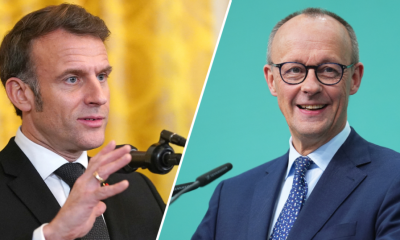Analysis
Russia’s Strategic Gamble: The Geopolitical Chess Game in Eastern Europe

Russia’s Strategic Gamble: Window of Opportunity Amidst Ukrainian Anticipation of US Weapons
By Kasim Abdulkadir:
The ongoing conflict between Russia and Ukraine has taken another pivotal turn, as Russia capitalizes on a critical period when Ukrainian forces await the arrival of US-supplied weaponry. This moment, characterized by a temporary imbalance in military capabilities, presents a controversial and strategically significant juncture in the broader geopolitical landscape of Eastern Europe. This article delves into the multifaceted perspectives and scenarios arising from this situation, highlighting its potential to reshape global power dynamics.
The Strategic Calculus of Timing
Russia’s decision to intensify its military efforts during this period of Ukrainian anticipation is a calculated risk. The waiting period for the delivery of advanced US weapons leaves Ukrainian forces in a potentially vulnerable position. For Russia, this is seen as a window of opportunity to exert pressure and achieve tactical gains before Ukraine’s military capabilities are bolstered.
From a strategic perspective, this move is a classic example of exploiting a temporary advantage. By intensifying military actions now, Russia aims to create facts on the ground that could complicate future Ukrainian counter-offensives and negotiations. The potential capture of strategic locations and the imposition of new territorial realities could strengthen Russia’s bargaining position in any future peace talks.
Ukrainian Resilience and Western Support
On the other side, Ukraine’s resilience and the steadfast support of its Western allies present significant challenges to Russia’s ambitions. The delivery of US weapons, while delayed, promises to significantly enhance Ukraine’s defensive and offensive capabilities. Advanced systems such as the Patriot missile defense systems and Abrams tanks are expected to shift the balance of power on the battlefield.
The Ukrainian government and military have remained resolute, using this period to reorganize and fortify their defenses. The anticipation of US weapons has also galvanized international support, with NATO and EU countries reaffirming their commitment to Ukraine’s sovereignty and security. This international backing is crucial, as it sends a strong message to Russia about the geopolitical stakes involved.
Global Implications and Geopolitical Ramifications
The unfolding events in Ukraine have far-reaching implications beyond the immediate conflict zone. The way this situation evolves could redefine the global security architecture and influence the strategic calculations of other nations. For instance:
- NATO’s Credibility and Cohesion: The alliance’s response to Russia’s actions will be closely watched. A robust support for Ukraine could reinforce NATO’s credibility and deter future aggressions. Conversely, any perceived weakness or indecision could embolden other adversaries.
- US-Russia Relations: This period marks a critical test for US foreign policy. The effectiveness of US military aid to Ukraine will be a significant factor in shaping future US-Russia relations and the broader East-West geopolitical divide.
- China’s Calculations: As a key ally of Russia, China’s stance and actions will be influenced by the developments in Ukraine. The conflict serves as a case study for China in its considerations regarding Taiwan and its regional ambitions.
Potential Scenarios and Outcomes
Several potential scenarios could emerge from the current situation, each with distinct implications:
- Russian Gains Before US Weapons Arrival: If Russia manages to secure significant territorial gains before the US weapons arrive, it could strengthen its negotiating position and force Ukraine into a more defensive posture.
- Effective Ukrainian Counter-Offensive: Once the US weapons are delivered, Ukraine could launch a potent counter-offensive, reclaiming lost territories and altering the momentum of the conflict in its favor.
- Protracted Stalemate: The conflict could devolve into a prolonged stalemate, with neither side able to achieve a decisive victory. This scenario would likely lead to increased international pressure for a negotiated settlement.
- Escalation and Wider Conflict: There’s a risk that the conflict could escalate further, potentially drawing in more direct involvement from NATO or leading to broader regional instability.
Conclusion: The Stakes of Eastern European Security
As the world watches the unfolding drama in Ukraine, the stakes could not be higher. The current period of vulnerability, strategic opportunism, and impending reinforcement sets the stage for a potentially transformative moment in Eastern European security. The decisions made by the key actors in the coming weeks and months will reverberate across the globe, influencing not only the future of Ukraine but also the broader international order.
This controversy, filled with strategic maneuvers and high-stakes decisions, serves as a stark reminder of the fragile balance of power and the enduring importance of geopolitical strategy in shaping our world today.
Analysis
Kenya Falls Deeper Into China’s Orbit – Signing 20 Deals
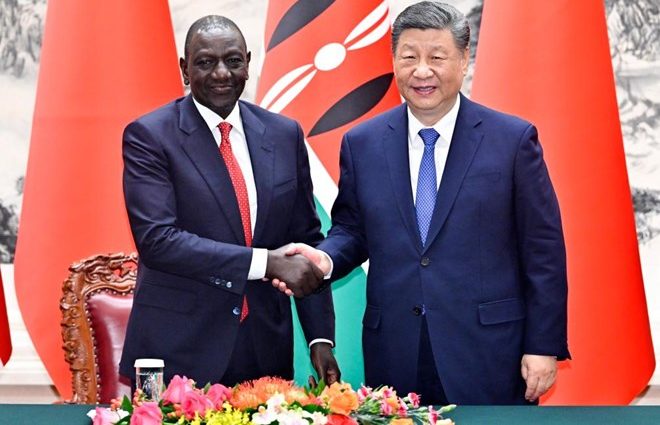
China and Kenya elevate ties, signing 20 deals to deepen Belt and Road control and boost Beijing’s influence across Africa.
China Tightens Grip on Kenya as Xi and Ruto Forge “New Era” Alliance
While the world grapples with Beijing’s expanding shadow, Kenya just tightened the noose willingly.
On Thursday, Chinese President Xi Jinping and Kenyan President William Ruto agreed to elevate bilateral ties to what they proudly call a “China-Kenya community with a shared future for the new era” — a thinly veiled move to deepen Kenya’s dependency on Chinese power structures while boosting China’s control over Africa’s strategic corridors.
Xi wasted no time framing the deal in sweeping, imperial language: vowing to make Kenya an “example” of the China-Africa model, strengthen Belt and Road entrenchment, and lead the so-called “Global South” under China’s guidance. The symbolism couldn’t be clearer — Beijing isn’t just building roads anymore. It’s building regimes.
Under the agreement, the two leaders signed 20 new cooperation deals, expanding China’s reach into Kenyan high-tech sectors, infrastructure, education, tourism, media, and “people-to-people” propaganda networks. It’s a full-spectrum offensive designed to lock Kenya tighter into China’s long-term geopolitical designs.
In case the world had any doubts, Ruto declared Kenya’s full loyalty to Beijing’s agenda, reaffirming the “One China” policy and explicitly rejecting Taiwan’s sovereignty — echoing the exact rhetoric Beijing demands from its vassal states.
The timing is no accident. As trade wars escalate and the U.S. and its allies work to push back against China’s economic warfare, Xi is fast-tracking African dependencies. Kenya, once seen as a potential balancing actor, now looks poised to become a flagship outpost for Beijing’s economic empire on the African continent.
In exchange for railroads like the Mombasa-Nairobi line — now loaded with Chinese debt — Ruto has effectively offered up Kenya’s strategic autonomy. At the Great Hall of the People, Xi and Ruto celebrated the expansion of Belt and Road domination with grand ceremonies and banquet feasts, but behind the gold drapes lies a darker reality: Africa’s critical corridors are slipping into Chinese control without a fight.
Xi openly called for deeper financial “integration,” code for binding Kenya to Chinese lenders and markets, and painted Kenya as a “stabilizer” to help China challenge international trade norms set by the West. Ruto played along, warning against “trade wars” while applauding China’s global role as a “stabilizer” — a statement that echoes Xi’s anti-Western narrative almost word for word.
For Kenya, the price of loyalty may soon become clear: crushing debts, political capture, and a slow erosion of real sovereignty under Beijing’s careful hand.
For Africa — and the world — this is a powerful wake-up call.
As China cements its hold on yet another key African partner, the stakes are rising. Fast.
Analysis
The Rise of Russia’s African Empire: Moscow’s March to the Atlantic
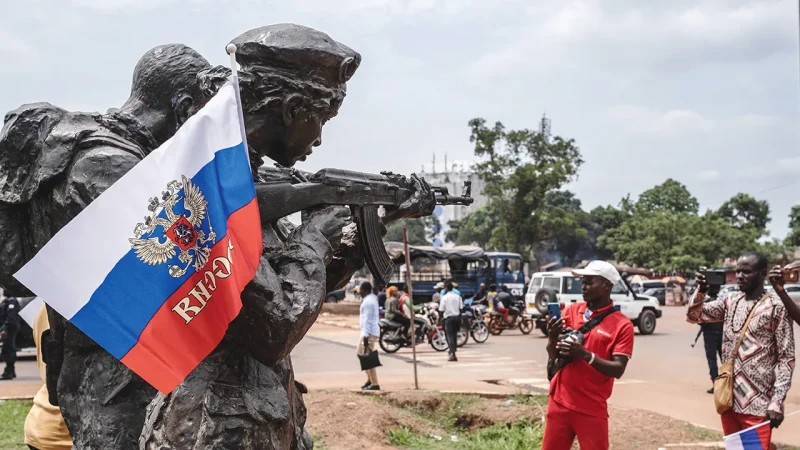
As the U.S. disengages, Russia entrenches itself in Africa — arming juntas, toppling Western influence, and redrawing the global map.
Russia isn’t just playing defense on Ukraine—it’s building an empire in Africa. From the Sahel to the Atlantic coast, Moscow is turning instability into strategy. What the West sees as chaos, the Kremlin sees as opportunity. And it’s capitalizing fast.
The Trump administration’s focus on Eastern Europe has left Africa dangerously exposed. While the U.S. exits Niger and France retreats from Mali, Burkina Faso, and Senegal, Russia is stepping in—with weapons, mercenaries, and deals. And make no mistake: this isn’t charity. This is conquest by proxy.
In Burkina Faso, Mali, and Niger—the heart of the new Alliance of Sahel States—military juntas backed by Moscow have severed ties with France and the U.S., forming a regional force under Russian guidance. With 5,000 troops poised to reshape the Sahel, Western-backed frameworks like G5 Sahel are being dismantled. In their place? Russian-dominated command centers and Wagner-led operations.
Wagner PMC, far from being a rogue outfit, is the Kremlin’s hand in Africa’s affairs. From diamond mines in the Central African Republic to military bases in Libya, it embeds deeply, restructures loyalties, and leaves Moscow with leverage. In many African capitals, Wagner is more influential than any ambassador.
But Putin’s ambitions don’t stop at the Sahel. Lavrov’s 2023 visit to Mauritania, a key Atlantic state, signals a coastal pivot. Russia wants the Atlantic flank—naval access, trade routes, and digital infrastructure. And it’s using soft power, narratives of anti-colonial solidarity, and military dependence to get there.
Washington is watching—but not reacting. As Trump pursues a Ukraine deal with Putin, the Kremlin is racking up wins in Africa. China and Iran are also in sync, forming a trilateral axis to counter Western influence in every sphere—military, digital, and ideological.
Bottom line: Africa is no longer a battlefield for hearts and minds—it’s now a staging ground for great power competition. Russia isn’t just back. It’s building a new empire, and if the U.S. doesn’t act, NATO will find its southern flank compromised not by bullets, but by silence.
Analysis
How Iran Is Using China to Hedge Against the U.S.

Iran-China Alliance Strengthens Amid U.S. Nuclear Talks — Beijing Becomes Tehran’s New Insurance Policy.
As Iran prepares for another round of indirect nuclear negotiations with the United States in Oman, it is simultaneously tightening its embrace with China — and not quietly. Tehran has declared 2025 a potential “golden year” in Iran-China relations. This is more than diplomatic flattery; it is a calculated hedge. Iran’s leadership is betting that Beijing will provide a geopolitical counterweight to Washington as the regime navigates unprecedented economic and political pressure.
Iranian Foreign Minister Abbas Araghchi’s trip to Beijing this week was not just another routine meeting. He called the talks with Chinese Foreign Minister Wang Yi “lengthy but highly significant,” covering everything from bilateral economic cooperation to the global ambitions of U.S. power. It’s clear that Tehran is not merely looking for trade — it’s looking for insurance. And China, locked in its own rivalry with Washington, is willing to provide it.
This partnership is built on mutual grievance: both nations denounce U.S. “hegemonic behavior” and seek to undermine the current Western-dominated order. Iran sees in China a lifeline — politically, economically, and diplomatically. With oil revenues still under sanctions and the U.S. pressuring its proxies across the region, Iran hopes that a powerful friend in Beijing will tilt the balance in its favor.
President Masoud Pezeshkian’s planned visits to China and Azerbaijan, alongside the upcoming Shanghai Cooperation Organization summit, signal a larger strategy: diversify alliances, elevate visibility, and escape the stranglehold of Western isolation.
But the stakes are high. If the nuclear talks with the U.S. collapse, Tehran will need China more than ever — for cash, technology, weapons, and legitimacy. If the talks succeed, Iran still wants China close, to resist future Western attempts to reimpose pressure.
Bottom line: Iran isn’t placing all its bets on Washington — it’s building a parallel track with Beijing. In a year filled with diplomatic maneuvering, Tehran hopes China will be more than a partner. It wants a patron. And 2025 may be the year it gets one.
Analysis
Franco-German Fireworks or Fragile Fantasy?
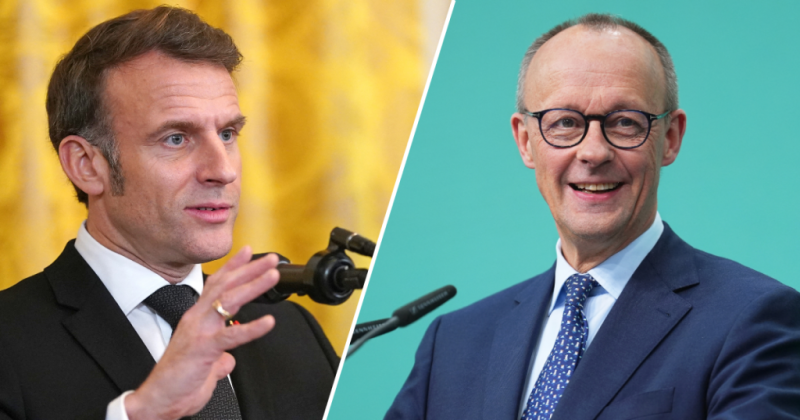
Merz and Macron ignite a new EU vision—but it’s built on shaky ground. Behind the public romance between France and Germany lies a storm of unresolved tensions. Can Merz and Macron truly redefine Europe, or is this just another act in Brussels’ endless theatre of delusion?

When Friedrich Merz chose Paris for his first foreign visit, pundits swooned. A conservative hawk from Berlin shaking hands with Emmanuel Macron—the Europhile poster boy—was heralded as the rebirth of the so-called Franco-German “engine” of Europe. But beyond the photo ops and flowery rhetoric lies a deeper truth: this new political marriage is laced with contradictions, mistrust, and strategic desperation.
Yes, Macron finally sees in Merz a partner who isn’t hypnotized by Washington’s shadow. Merz has echoed France’s call for “strategic autonomy” and even suggested that Europe must stop depending on the U.S. for its geopolitical security. That shift would be seismic—if it were sincere.
But Merz is no De Gaulle. He’s a fiscal hawk, backed by conservatives terrified of debt and allergic to the very kind of joint EU borrowing Macron sees as vital for defense investment. The idea of Eurobonds to boost EU arms production? Forget it. Merz’s lips may say “Oui,” but his parliament screams “Nein.”
On trade, the contradiction widens. Merz is obsessed with pushing through the Mercosur deal to save Germany’s export economy. Macron? He’s trapped between his neoliberal instincts and the rage of French farmers ready to torch the deal in protest. The only likely compromise? A cynical abstention, dressed up as diplomacy.
Then there’s energy. France wants subsidies for nuclear power. Germany wants hydrogen flowing from Spain. The pipeline project remains stalled. Defense projects, too—like the SCAF fighter jet—are bogged down by mistrust and national egos. For every handshake, there’s a hidden dagger.
The truth? This so-called “new chapter” is a crisis management romance, born of fear: fear of Trump’s return, fear of NATO decay, fear of China’s rise. But it’s not built on shared values. It’s built on shared panic.
So can the Franco-German engine power Europe’s future? Maybe. But only if both leaders stop playing games—and start confronting the deep fractures beneath the surface.
Until then, it’s not a honeymoon. It’s a photo op on borrowed time.
Analysis
Erdogan’s Horn of Africa Power Grab: Is the Turkish Military Winning Somalia’s Capital?

Turkey is waging a silent conquest in Mogadishu—with troops, drones, and oil deals—and Somalia’s president has already sold the keys.

In the name of “counterterrorism,” Turkey just staged a geopolitical takeover in Mogadishu. Two military planes, 500 soldiers, and more to come. But this isn’t just about Al-Shabaab—this is about Erdogan turning Somalia into a Turkish satellite state, and President Hassan Sheikh Mohamud is rolling out the red carpet.

The Turkish military is no joke. It’s NATO’s second-largest army, hardened by decades of insurgency warfare, equipped with German tanks, U.S. fighters, and its own lethal drone fleet. Their F-16s fly low while Bayraktar TB2 drones hunt targets—perfect for the urban warfare creeping into Mogadishu’s night.
But what’s terrifying is not just the firepower—it’s the strategy. Turkey isn’t just fighting Al-Shabaab, it’s occupying political space, installing its own contractors, oil firms, and trainers across Somalia. Somalia’s president isn’t leading a resistance—he’s hosting an auction.
Why is Hassan Sheikh letting it happen?

Simple: Erdogan found his puppet. PM Hamza’s Las Anod stunt was smoke and mirrors—a distraction while Ankara’s warships dock, oil deals are signed, and the Somali army becomes a Turkish proxy.
This is the quiet conquest of Mogadishu. The West has pumped in $20 billion in aid over two decades—and what’s left? Al-Shabaab controls Mogadishu after dark. And now, Turkey controls it by day.
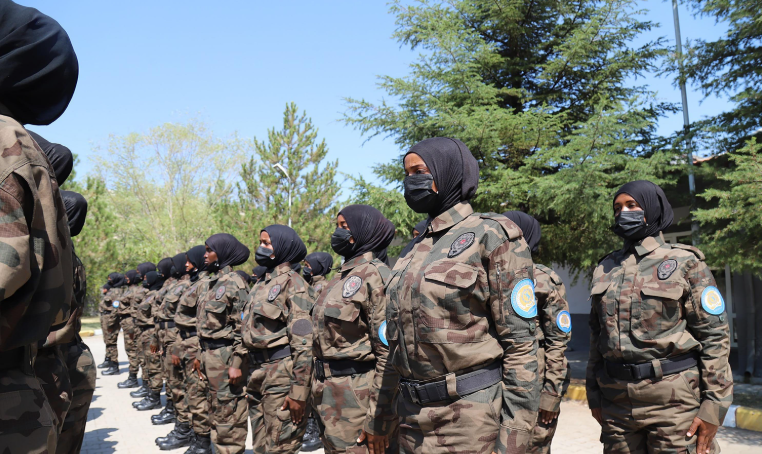
Turkish-trained female Somali commandos arrive in Mogadishu
The irony? While Trump talks business-first diplomacy, Erdogan is doing business with America’s enemies, grabbing oil fields in Somali territory that once belonged to U.S. firms. Turkish firms now guard U.S. diplomats in Somalia. Turkish warships circle the Red Sea. And Turkish drones rule the skies.
This isn’t a partnership. It’s a hostile takeover.

Somalia has been bought. Somaliland has been ignored. And if the U.S. doesn’t wake up, Erdogan’s Ottoman hustle will gut American influence from Africa to the Levant.
Time to name names. Time to cut ties. And time to back the real allies—those who don’t sell their sovereignty for drones and flags.
Analysis
Trump’s War on the World Order: A New Empire Rising

How Trump’s second term is torching the global rules and redrawing power lines—with chaos, calculation, and cold ambition.

Trump’s return has shattered the liberal international system the U.S. once built. This WARYATV analysis unpacks how his wrecking ball diplomacy is remaking the world—and why it could be dangerous or brilliant.
Trump isn’t just rewriting U.S. policy—he’s smashing the entire world order with a smile and a shrug. From NATO to the UN, from China tariffs to the Gaza evacuation plan, the second Trump presidency is burning the global script the U.S. once wrote. And here’s the twist: he’s not hiding it.
Forget liberal principles, multilateralism, or diplomacy. This is Art of the Deal: Planet Earth Edition. Trump’s worldview is simple—power respects power, and rules are for the weak. Whether he’s proposing to absorb Greenland or backing Russia’s land grabs, he’s restoring cynical realpolitik, the kind the West once swore it buried after World War II.
The old order was built on trust, institutions, and shared norms. But Trump saw the cracks—and now he’s kicking them wide open. His tariffs aren’t economic policy; they’re blunt-force tools to force loyalty and tribute. His budget cuts aren’t ideological; they’re designed to starve globalism and fuel nationalism.
And here’s the unsettling part:
It’s working.
China is bleeding from economic pressure. Europe is scrambling to adapt. African and Asian states are chasing new deals, desperate to avoid being left behind. Trump knows the UN is a relic, that Bretton Woods is obsolete, and that dominance—not diplomacy—is the new global currency.
Israel plays along, hoping to gain from the chaos. Netanyahu says nothing, knowing Trump might just hand him historic wins. But beneath the silence is fear—because when America breaks the world, no one is safe, not even its allies.
So is this the end of the post-WWII order? Maybe not. But Trump has already buried the illusion that it still runs the world.
This isn’t strategy—it’s demolition. And what rises from the rubble could reshape the century.
Analysis
From Cell to Summit: The Prisoner Who Became Syria’s President
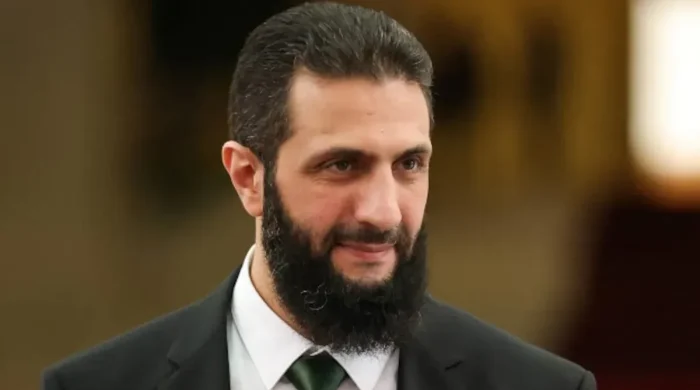
Ahmad al-Sharaa’s leaked prison past upends Syria’s new narrative—just as he prepares to sit at the Arab League table.
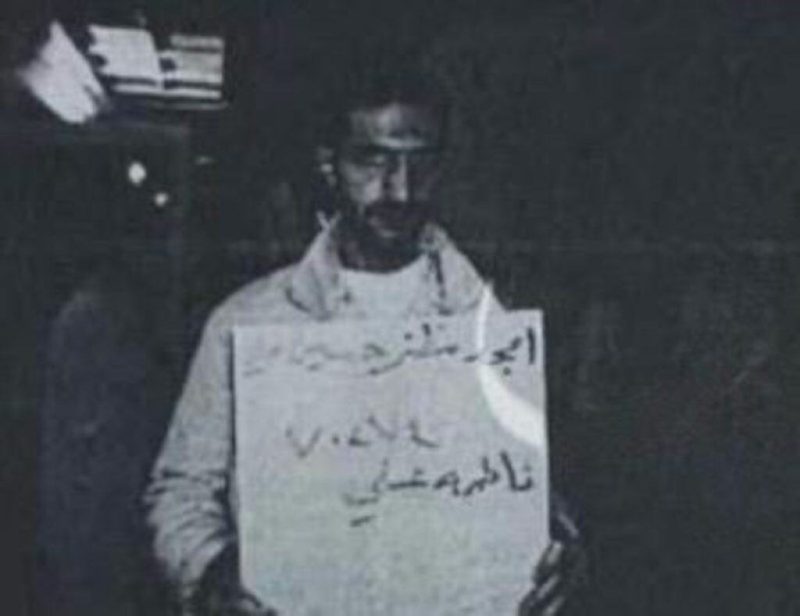
Leaked documents reveal Syria’s new president Ahmad al-Sharaa was once imprisoned in Iraq under a fake name. The story reshapes Syria’s post-Assad era.
The Syrian revolution’s most surprising twist just detonated across the Arab world: Ahmad al-Sharaa, the man now leading Syria’s transition after the collapse of Assad’s regime, was once a prisoner in Iraq—detained by the U.S. for six years under a false identity.
This revelation isn’t just a backstory—it’s a political earthquake. Documents independently verified show that al-Sharaa, under the alias Amjad Muzafar Hussein Al-Nuaimi, was arrested in 2005 and held at Taji prison until 2011. It wasn’t a mistake. It was strategy: fluent in a Mosul dialect and armed with forged papers, he evaded detection during the height of America’s war in Iraq.
That prison sentence forged more than just survival—it built a legend. Al-Sharaa returned to Syria in 2011 as the uprising began, aligned briefly with jihadist factions, including Al-Qaeda and ISIS, before launching his own faction: Hayat Tahrir al-Sham (HTS). By 2016, he had reinvented himself again—breaking with extremism and consolidating control over Idlib, Syria’s last opposition stronghold. In short, he didn’t just witness the Syrian conflict—he dominated it.
Now, just months after Damascus fell and Assad’s regime collapsed, this same man—once known only as Abu Muhammad al-Golani—is Syria’s interim president. He’s set to appear on May 17 at the Arab League summit in Baghdad, and the world will have to decide: is al-Sharaa a revolutionary hero, or a militant with a new mask?
Why does this leak matter now? Some suspect Iranian sabotage, others blame rivals inside Iraq. Either way, it exposes a narrative Syria’s new government hoped to bury. Al-Sharaa isn’t a clean-suited technocrat or a Western-trained reformer. He’s a battlefield survivor, molded by war, prison, and ideology.
For some, that’s exactly what Syria needs—a fighter who outlived Assad, the jihadists, and foreign occupations. For others, it’s proof that Syria’s future remains in the grip of men shaped by conflict, not consensus.
But one thing is clear: the war may have changed Syria’s map—but it never let go of its characters. From the shadows of a jail cell to the heights of Arab diplomacy, Ahmad al-Sharaa’s arc captures the volatile DNA of the new Syria.
Reshuffling the Middle East: Israel’s dilemma in the Syrian chaos
After Assad: Will Syria’s new leaders avoid the cycle of brutality?
Who is Asma Assad, the London-born wife of Syria’s deposed dictator?
Syria After Assad: Former prisoners speak of freedom and lingering pain
Iran and Turkey’s condemnation of Israel’s role in Syria: The battle for influence
Syria’s New Leadership: A Rising Force or Another Regional Rival?
Turkey’s Imminent Invasion into Syria Could Spark Regional Chaos
US Removes $10M Bounty on Leader of Rebel Group Now in Charge of Syria
Assad’s Relatives Detained at Beirut Airport Amid Syrian Regime Collapse
Russia’s Currency Airlift to Syria: A Power Play Against Western Sanctions
Russian Delegation Seeks to Secure Military Bases in Syria After Assad’s Fall
Syria Foils Islamic State Bomb Plot at Shiite Shrine Amid Sectarian Tensions
Assad’s Former Aide Claims Putin “Tricked” Deposed Syrian President During Final Days
Post-War Syria: Challenges Loom as Rebel Coalition Faces Uncertain Transition
The Retreat of Iranian Proxies in Syria and Its Broader Implications
Analysis
America Pulls the Plug on Somalia: UN Funding Blocked, AUSSOM on the Brink

Trump eyes embassy closures as US rejects UN plan to fund peacekeepers in Somalia — Mogadishu’s last lifeline in peril.

The US shocks the UN by rejecting funding for African Union forces in Somalia, just as Trump weighs closing the US Embassy in Mogadishu. With Al-Shabaab advancing and oil politics heating up, is Somalia doomed to implode?
The United States just signaled the collapse of Somalia’s last fragile security architecture — and it did so with chilling clarity. Washington has publicly rejected UN efforts to fund the African Union Stabilization Support Mission in Somalia (AUSSOM), effectively gutting any hope for predictable peacekeeping operations in a country teetering on the edge of collapse.

This isn’t just a bureaucratic snub — it’s a geopolitical death sentence for Somalia. Al-Shabaab militants are already testing the vacuum, launching a multi-pronged assault on Adan Yabaal, a key military base in Middle Shabelle. If confirmed, the town’s fall would mark the largest strategic loss since Somalia launched its offensive against terror in 2022.
UN Secretary-General António Guterres warned the Security Council: no funding, no peace. But the US—under Trump’s second-term posture—is slamming the door shut, labeling Somalia as unfit for a hybrid funding model under Resolution 2719. Diplomats are in a panic. Meanwhile, Trump is reportedly planning to close up to 30 diplomatic missions, with Mogadishu’s embassy topping the list.
Somalia’s response? Desperation disguised as diplomacy. The FGS is now peddling oil blocks in contested territories like Nugaal Valley. In a flashy announcement on X, Somalia’s ambassador to the US declared “Somalia is open for drilling,” targeting American firms with an offer it legally and militarily cannot secure.

Somalia’s Ambassador to the United States, Dahir Hassan Arab
The move comes after Somalia’s recognition of SSC-Khaatumo — a region still engulfed in the political wreckage of its war with Somaliland.
This isn’t about development. It’s about weaponizing recognition, resource manipulation, and fake sovereignty in a bid to win Trump’s favor and undermine Somaliland’s momentum.
But while Hargeisa builds forests and attracts foreign media praise, Mogadishu is drowning in debt, insurgency, and denial. The West is tuning out, and even the UN is losing patience. The US, once Somalia’s diplomatic oxygen, is now pulling the plug.
Somalia is not rising — it’s being unplugged.
-

 Analysis2 months ago
Analysis2 months agoSaudi Arabia’s Billion-Dollar Bid for Eritrea’s Assab Port
-

 ASSESSMENTS4 weeks ago
ASSESSMENTS4 weeks agoOperation Geel Exposes the Truth: International Community’s Reluctance to Embrace Somaliland as a Strategic Ally
-

 Somaliland3 months ago
Somaliland3 months agoSomaliland and UAE Elevate Ties to Comprehensive Strategic Partnership
-

 Africa1 year ago
Africa1 year agoHow Somaliland Could Lead the Global Camel Milk Industry
-

 Analysis1 year ago
Analysis1 year agoIran escalates conflict, attacking Israel; US forces help Israel to intercept Iranian projectiles
-

 Analysis6 days ago
Analysis6 days agoFrom Cell to Summit: The Prisoner Who Became Syria’s President
-

 Top stories11 months ago
Top stories11 months agoGunmen Kill 11 in Southeastern Nigeria Attack, Army Reports
-

 Analysis1 year ago
Analysis1 year agoIsrael and Iran on Edge: Tensions Escalate Amidst Rising Threats






